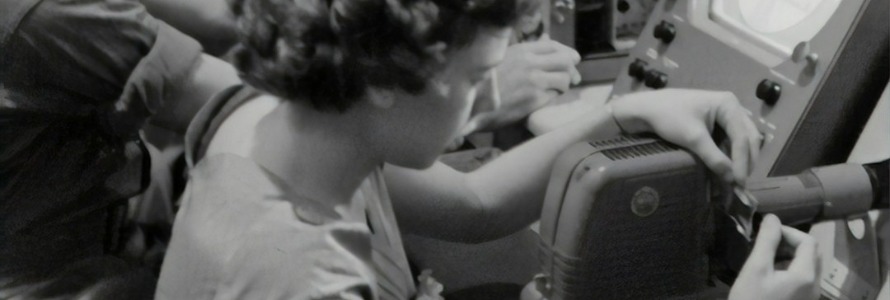
Introduction: Journey Through Time
Historical nonfiction is a captivating genre that invites readers to explore the past through meticulously researched narratives. This genre goes beyond dry facts and dates, bringing history to life with engaging stories, rich details, and human experiences. Whether you’re a history buff, a curious reader, or an aspiring writer, historical nonfiction offers a treasure trove of knowledge and insight.
In this guide, we’ll delve into the world of historical nonfiction, examining its appeal, notable works, and techniques for writing compelling history. Let’s embark on this literary journey through time and uncover the stories that have shaped our world.
The Appeal of Historical Nonfiction
Historical nonfiction holds a unique charm that resonates with readers for various reasons:
1. Connecting with the Past
Historical nonfiction provides a window into the past, allowing readers to connect with the people, events, and cultures that have shaped our world. It offers a sense of continuity and helps us understand how history influences the present and future.
2. Learning from History
By exploring historical events and their impact, readers can gain valuable lessons and insights. Historical nonfiction often highlights patterns, challenges, and triumphs that are relevant to contemporary issues, offering perspectives that can inform our decisions and actions.
3. Humanizing History
Historical nonfiction brings history to life by focusing on the human stories behind the events. It delves into the lives, emotions, and experiences of individuals, making history relatable and engaging.
4. Escaping into the Past
For many readers, historical nonfiction offers an escape into a different time and place. It transports them to bygone eras, immersing them in the sights, sounds, and atmospheres of the past. This immersive experience can be both educational and entertaining.

Notable Works of Historical Nonfiction
The genre of historical nonfiction is rich with notable works that have made a significant impact. Here are some standout titles that every history enthusiast should consider reading:
“The Diary of a Young Girl” by Anne Frank
Anne Frank’s poignant diary offers a firsthand account of her life in hiding during the Holocaust. Her reflections on fear, hope, and the human spirit provide an intimate and powerful perspective on this dark period in history.
“Unbroken: A World War II Story of Survival, Resilience, and Redemption” by Laura Hillenbrand
Laura Hillenbrand’s “Unbroken” tells the extraordinary true story of Louis Zamperini, an Olympic runner turned World War II airman who survives being shot down, drifting at sea, and enduring brutal captivity in a Japanese POW camp. Hillenbrand’s meticulous research and vivid storytelling make this an inspiring and gripping read.
“The Wright Brothers” by David McCullough
In “The Wright Brothers,” David McCullough chronicles the lives and achievements of Wilbur and Orville Wright, the pioneers of aviation. McCullough’s engaging narrative captures the determination and innovation that led to the first successful powered flight.
“Team of Rivals: The Political Genius of Abraham Lincoln” by Doris Kearns Goodwin
Doris Kearns Goodwin’s “Team of Rivals” explores Abraham Lincoln’s leadership and the complex relationships he forged with his cabinet members during the Civil War. The book provides a deep and nuanced look at Lincoln’s political acumen and the challenges he faced in preserving the Union.
“The Immortal Life of Henrietta Lacks” by Rebecca Skloot
Rebecca Skloot’s “The Immortal Life of Henrietta Lacks” tells the story of Henrietta Lacks, whose cancer cells were taken without her knowledge and used for groundbreaking medical research. The book delves into the ethical, scientific, and personal dimensions of this fascinating and controversial case.

Techniques for Writing Compelling Historical Nonfiction
Writing historical nonfiction requires a blend of thorough research, narrative skill, and a deep understanding of history. Here are some techniques to help you craft engaging and accurate historical narratives:
1. Conduct Thorough Research
Thorough research is the foundation of historical nonfiction. Gather information from primary sources (letters, diaries, official documents) and secondary sources (books, articles, scholarly works). Verify the accuracy of your information and cross-reference multiple sources to build a comprehensive understanding of your topic.
2. Focus on Human Stories
Highlight the human stories behind historical events. Focus on the experiences, emotions, and perspectives of individuals to make history relatable and engaging. Personal anecdotes and firsthand accounts add depth and authenticity to your narrative.
3. Create Vivid Descriptions
Use vivid descriptions to bring historical settings to life. Describe the sights, sounds, smells, and atmospheres of the time and place you’re writing about. Sensory details help readers immerse themselves in the historical context and create a more vivid and memorable reading experience.
4. Build a Strong Narrative Structure
Organize your narrative with a clear beginning, middle, and end. Introduce key characters and events, build tension and conflict, and provide resolution and reflection. A well-structured narrative keeps readers engaged and helps them follow the storyline.
5. Use Dialogue Effectively
Incorporate dialogue to bring historical figures to life and add dynamism to your narrative. Use dialogue to reveal character traits, convey emotions, and highlight important conversations. Ensure that the dialogue is historically accurate and reflects the language and speech patterns of the time.
6. Provide Context and Analysis
Provide context and analysis to help readers understand the significance of historical events. Explain the broader social, political, and cultural factors that influenced the events and their outcomes. Analyze the impact and legacy of these events to provide a deeper understanding of their relevance.
7. Maintain Accuracy and Integrity
Accuracy and integrity are paramount in historical nonfiction. Present facts truthfully and avoid sensationalism or exaggeration. Acknowledge the limitations of your sources and the potential for bias. Strive to provide a balanced and nuanced portrayal of history.

The Impact of Historical Nonfiction: Beyond Entertainment
Historical nonfiction has a profound impact on readers and society. Here are some ways in which historical nonfiction goes beyond entertainment:
1. Preserving History
Historical nonfiction preserves the stories and experiences of individuals and communities, ensuring that they are remembered and passed down to future generations. It contributes to our collective memory and understanding of the past.
2. Promoting Empathy and Understanding
By exploring the lives and experiences of people from different times and cultures, historical nonfiction promotes empathy and understanding. It helps readers appreciate the diversity of human experiences and the common threads that connect us.
3. Encouraging Critical Thinking
Historical nonfiction encourages critical thinking by presenting complex and multifaceted narratives. Readers are invited to analyze historical events, consider different perspectives, and draw their own conclusions. This fosters a deeper and more nuanced understanding of history.
4. Informing Contemporary Issues
Historical nonfiction provides valuable insights into contemporary issues by examining historical precedents and patterns. It helps readers understand the roots of current challenges and the lessons that history can offer for addressing them.
5. Inspiring Change
By highlighting the struggles and achievements of individuals and movements, historical nonfiction can inspire readers to take action and advocate for positive change. The stories of resilience, courage, and determination serve as powerful examples of the impact individuals can have on society.
Conclusion: Celebrating the Past in Prose
Historical nonfiction is a genre that brings history to life through engaging narratives and rich storytelling. It offers readers a deeper understanding of the past and its relevance to the present and future. Whether you’re writing or reading historical nonfiction, the genre provides a wealth of knowledge, inspiration, and insight.
So, the next time you pick up a historical nonfiction book, take a moment to appreciate the art and effort that goes into uncovering and preserving the stories of our past. Happy reading, and may your journey through history be filled with discovery and wonder!


